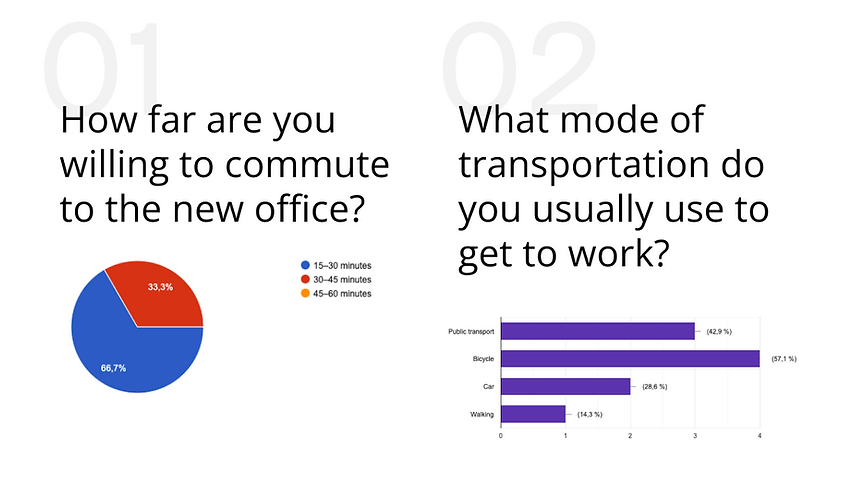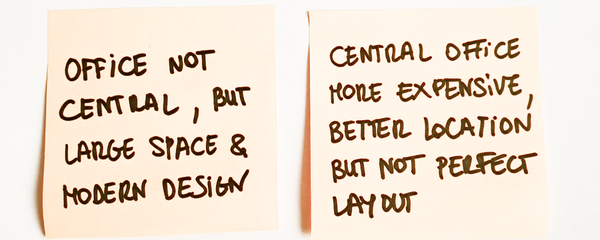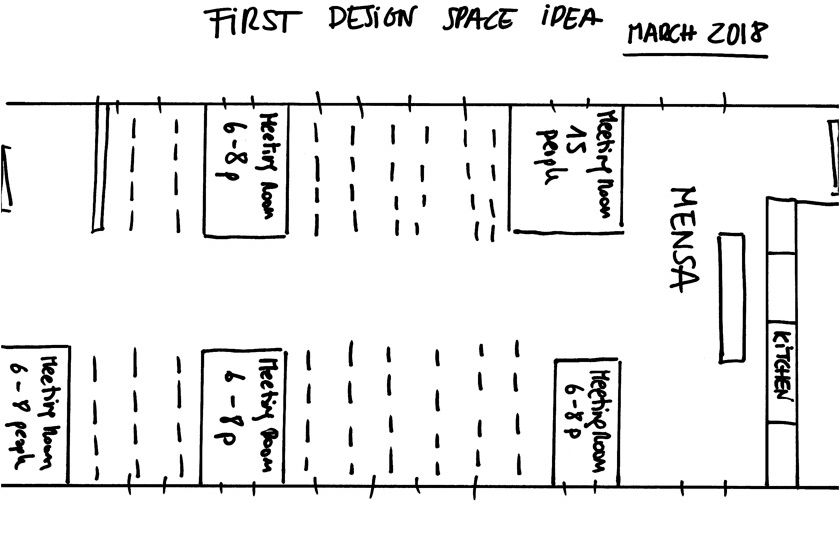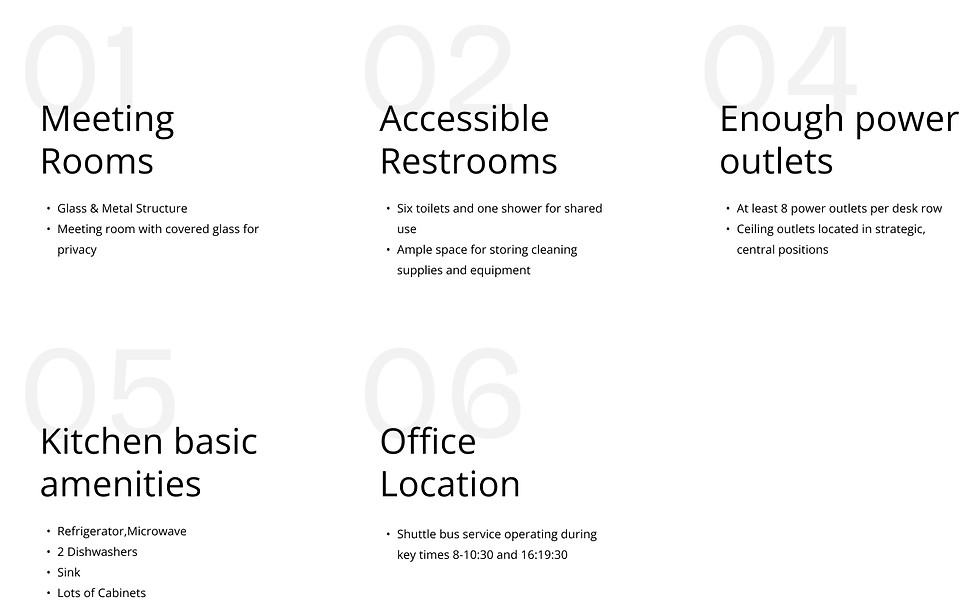Translatemore
UX/UI Case Study Translator Tool
Optimizing Task Management for Translators
Project Timeline: 01 July 2024 - 03 July 2024

OVERVIEW
Translatemore is a B2B task management solution designed to streamline workflows for translators and agencies. It helps companies efficiently manage language projects, ensuring seamless organization and productivity.
My Role:
As the timeline was very short and I had to come up with ideas and results quickly (in only three days), my role involved one day of user research, direct wireframing, creating a fast visual design, and developing a first prototype to present the project.
METHODOLOGY
DISCOVER
Understand the Problem
Research
Analyze the Results
DEFINE
Define Scenarios
Users
Concept Development
DEVELOP
Potential Office Spaces
Review Office Agreements
Implement Renovations
DELIVER
Office Move
Forniture & Design Space
First Problems & Solutions
01. DISCOVER
The Problem
The company was growing very fast, and the hiring process became almost a weekly occurrence. We had to move people around the space constantly and rearrange tables and teams almost every two weeks. The meeting rooms were too small, and we were spread across different floors, which made it difficult to maintain a sense of unity within the company.
The Possible "Perfect" Solution
The goal was to find a large open space with dedicated areas for different teams, multiple meeting rooms of various sizes, located in a central and convenient area. The price needed to be comparable to our previous office, and it should offer the possibility of additional space within the building if needed in the future to accommodate further growth.
Research
I needed here to separate 2 different types of Research: Business Requirements and Employees Requirements
Business Requirements:
The objective was to secure a large, open office space in Central Berlin with the following key criteria, based on research conducted in the 2018 market:
-
Price Comparison: The office should be priced similarly to the previous office, taking into account the market trends and average rental rates in Berlin in 2018.
-
Included Services:
-
Fast internet connectivity for optimal work efficiency.
-
Comprehensive repair and maintenance services.
-
Full management of the office by an external company, handling day-to-day operations and ensuring smooth functionality.
-
-
Legal Compliance: The office should include elevators that comply with legal inclusion and diversity laws, ensuring accessibility for all employees.
-
Contract Terms: The lease agreement should be for a minimum of five years, with the option to renew or extend the contract if needed to accommodate future growth and space requirements.
Results:
Increase in Rental Prices:
The rental price amount in central Berlin increased by nearly 44% from 2015 to 2018.

-
Most large office spaces were converted into co-working spaces, which was not a viable option for the company.
-
This also led to the following inconveniences:
-
Rental contracts and leasing terms were often too short.
-
Securing a long-term solution that met the company’s needs became increasingly challenging.
-
Employee Insights and Strategic Analysis for Office Relocation


02. DEFINE
Organizing Information
The research highlights the need for both quiet spaces and collaborative areas, along with better lighting and modern amenities. Employees also expressed concerns about the new office location and commuting time. This feedback will guide the design of the office layout, ensuring it addresses both productivity needs and employee well-being.
Team Dialog
The company was concerned about increased costs due to needing a larger space. Office rent and service costs like electricity, maintenance, and operations rose significantly. The first office searches were conducted to assess the market, including areas outside the city center, to explore lower rents for larger spaces and ensure the move would be economically viable.
Possible Scenarios, Main Insights to Consider

-
Commuting time is longer for some employees.
-
Possibility to design the space ourselves.
-
Better prices than in the city center.
-
Employees work from home more often.
-
No discussions with employees about the location.
-
Space is divided into rooms.
-
Prices are higher than the current office.
-
Challenges for future company growth.
Users
We identified three groups of users:

Concept Development
An office space with an open layout, including at least four meeting rooms for 6-8 people and one large meeting room for 15 people. The space should have enough desks to accommodate different teams together. Additionally, there should be a large cafeteria area where we can have lunch together, host events, or hold large meetings such as all-hands. The office should also include elevators and inclusive restroom facilities.
Location is also important, focusing on good public transport connections.
03. DEVELOP
Searching for the Ideal Office Space
We found two large office spaces in the city center. However, neither was practical—both lacked the open layout and size needed to accommodate our teams and future growth. Expanding efforts, we asked employees if they’d seen suitable buildings nearby. This led to a connection through an external contact, introducing us to a promising solution that might perfectly meet our requirements.
The Building
The building was an old, historical Berlin structure, nearly abandoned. The new owner was renovating it and seeking tenants for large spaces. The good news was that it offered a blank canvas—we could design the space as we wanted before renovations began. However, concerns remained about potential delays and the location was outside the city center.
Agreements
We had our own deadline—5 months to give notice to the owner of our current office. Conversations with the owner of the historical building started quickly. The price was within our budget, and they promised renovations could be completed in 5 months. The building already had a working elevator, and since it was mostly empty, they assured us that if we needed more space after two years, we could take the adjacent area on the same floor.
First base plan

Implement Renovations
We had our own deadline—5 months to give notice to the owner of our current office. Conversations with the owner of the historical building started quickly. The price was within our budget, and they promised renovations could be completed in 5 months. The building already had a working elevator, and since it was mostly empty, they assured us that if we needed more space after two years, we could take the adjacent area on the same floor.
